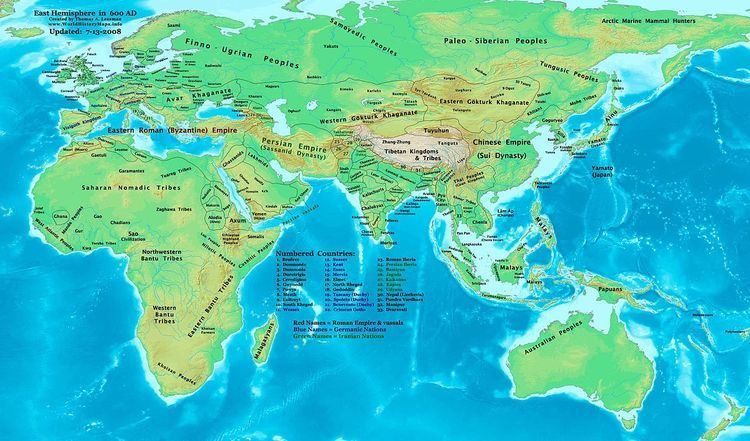 | ||
The 7th century is the period from 601 to 700 in accordance with the Julian calendar in the Common Era. The Muslim conquests began with the unification of Arabia by Muhammad starting in 622. After Muhammad's death in 632, Islam expanded beyond the Arabian Peninsula under the Rashidun Caliphate (632–661) and the Umayyad Caliphate (661–750). The Islamic conquest of Persia in the 7th century led to the downfall of the Sassanid Empire. Also conquered during the 7th century were Syria, Palestine, Armenia, Egypt, and North Africa.
Contents
The Byzantine Empire continued suffering setbacks during the rapid expansion of the Arab Empire.
In the Iberian Peninsula, the 7th century was the Siglo de Concilios, that is, century of councils, referring to the Councils of Toledo.
Harsha united Northern India, which had reverted to small republics and states after the fall of the Gupta Empire in the 6th century.
In China, the Sui dynasty was replaced by the Tang dynasty, which set up its military bases from Korea to Central Asia, and was next to the Arabian later. China began to reach its height. Silla allied itself with the Tang Dynasty, subjugating Baekje and defeating Goguryeo to unite the Korean Peninsula under one ruler. The Asuka period persisted in Japan throughout the 7th century.
